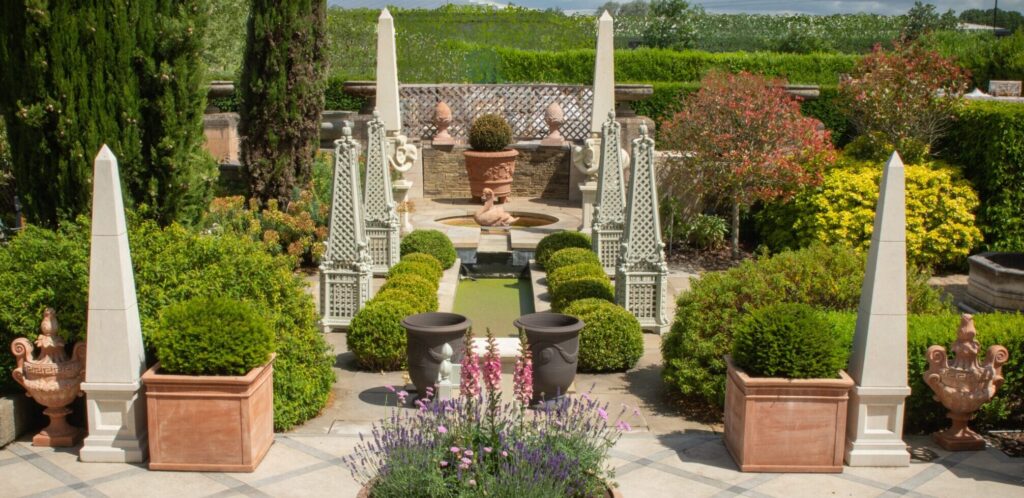
Today, we take it for granted that obelisks are the focal points of many towns, cities, gardens and landscapes. But how did the architecture of a land some 2000 miles away, whose great pyramids and obelisks were erected around 4500 years ago, come to become so widely adopted across the British Isles? The answer largely lies in a melting-pot of influences from ancient Rome to eighteenth century Grand Tourists.
Rome is home to the largest collection of Egyptian Obelisks in the world. At least eight obelisks created in antiquity now enhance the Eternal City, including the largest-standing ancient Egyptian obelisk in the world in the Piazza di San Giovanni in Laterano. The original for ORNAMENTI’s Elephant Obelisk is also in Rome, designed by Gian Lorenzo Bernini. The renowned original was unveiled in 1667 in the Piazza della Minerva in Rome, adjacent to the church of Santa Maria sopra Minerva and the iconic Pantheon, where it still stands today.
With the Enlightenment, aristocrats and wealthy landowners travelled extensively across Europe as part of what was known as the Grand Tour. Egypt was normally beyond reach, but most travelled to Italy, and especially Rome. In Rome the aristocratic tourists and aspiring architects admired obelisks brought from Egypt during the time of the Caesars and re-erected by popes in the Renaissance.
The first large obelisks in England were designed by Nicholas Hawksmoor in Ripon market square (1702), based on the St Peter’s Square obelisk in the Vatican City, and by Sir John Vanbrugh at Castle Howard (1714) – both in North Yorkshire where ORNAMENTI’s show garden is located today. During the Georgian period the obelisk design was adapted for British taste, typically being positioned on a sturdy pedestal. This style has been replicated by ORNAMENTI for both the Garden Obelisk and the larger Landscape Obelisk.
Obelisks have a purity of shape, making them appropriate for both classical and contemporary projects. They make excellent focal points in a design or either side of a walkway or entrance. Seemingly never out of fashion, obelisks continue to feature in many fine gardens and landscapes and have become icons of English garden design. Egypt is never far from the public consciousness and interest in Egypt has never waned – both nationally and regionally. The country’s fascination with Egypt is seemingly boundless with Egyptian monuments in the garden and landscape being the physical representation of that deep interest.

